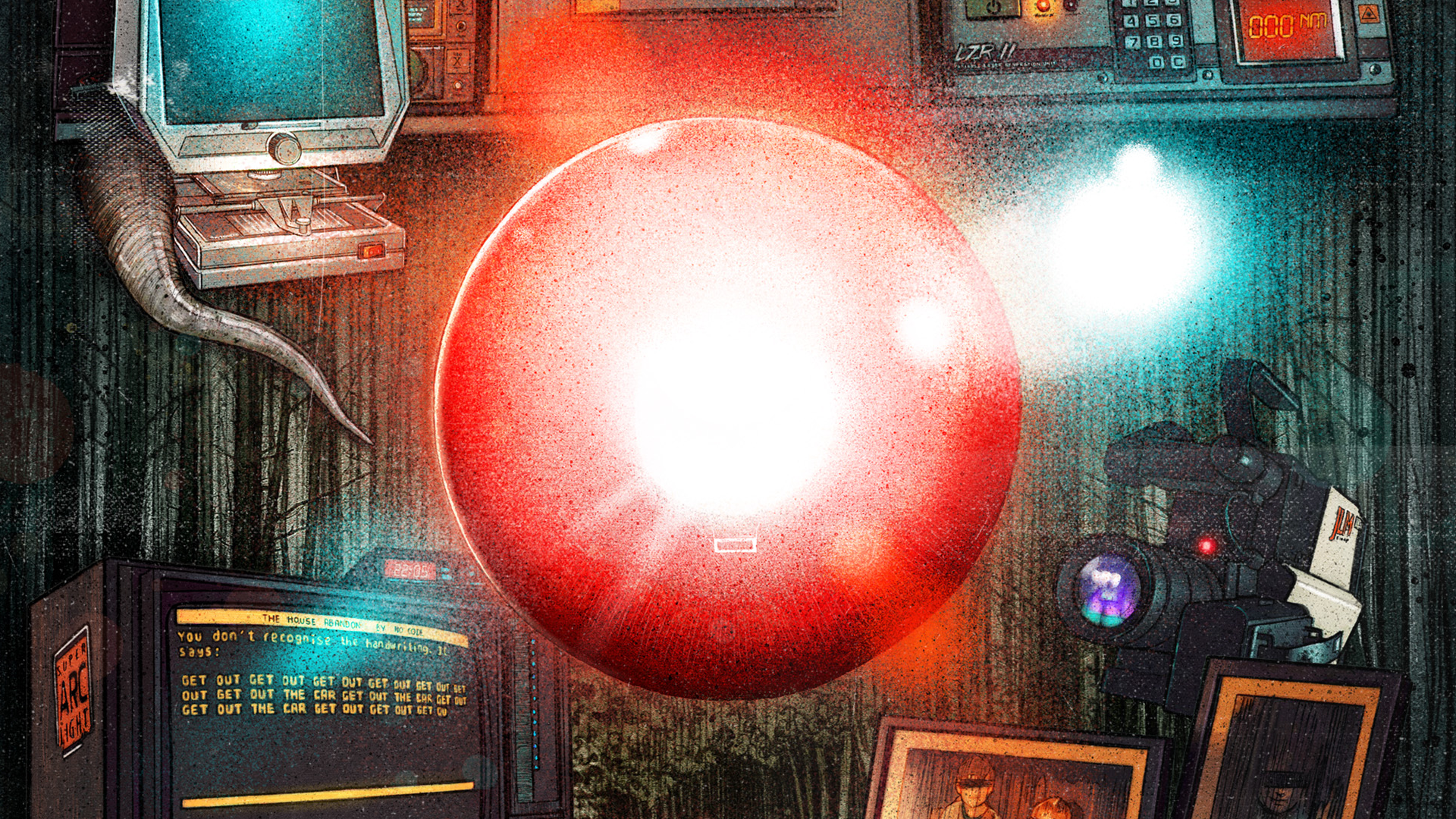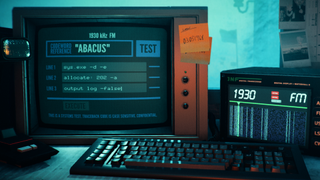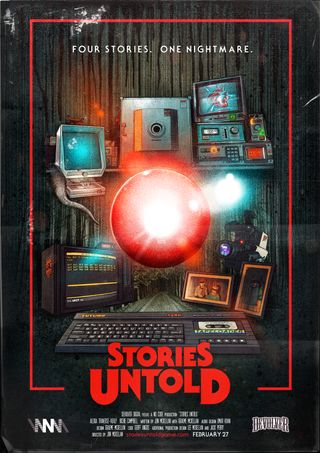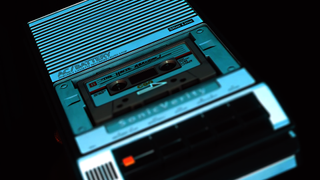Crafting the unique, genre-defying horror of Stories Untold
Writer/director Jon McKellan on the ideas and inspiration behind No Code’s clever, creepy horror adventure.

Stories Untold is one of the most interesting games I’ve reviewed so far this year. It was developed by No Code, a small team led by Jon McKellan, whose previous development work includes designing some of the retro-futuristic visuals in Alien: Isolation. It’s a fascinating, subversive experiment in storytelling with a sinister atmosphere, satisfying puzzles, and a beautifully understated ‘80s aesthetic, but it all started with a game jam.

Jon McKellan was a lecturer in digital film and graphic design at the SAE Institute in Glasgow. He then moved onto Realtime Worlds, The Creative Assembly, and Rockstar North, before founding No Code in 2015 where he now works as its creative director. He was voted one of BAFTA's Breakthrough Brits in 2016.
PC Gamer: Where did the idea for Stories Untold come from?
Jon McKellan: We put out the first prototype, The House Abandon, last year as part of Ludum Dare 36. It went viral and ended up being streamed and reviewed, which completely surprised us. So the natural thought was “Let’s do more of these!” We had some time to kill before our next big project started development, so it seemed like a good fit. We thought: the House Abandon was made in three days, so three more means we’ll be done in two weeks, right? Six months later and I nearly collapsed from exhaustion. Stories Untold is so much more than just The House Abandon times four. Lesson learned.
Was it always intended to be an anthology, or did that happen organically?
It was designed that way from the start. I have a lot of ideas for stories that wouldn’t work as a full 5+ hour game, so I thought a collection of monster-of-the-week episodes would be a fun way to present these smaller ideas. What made The House Abandon special to people was the meta twist of the game-in-a-game, so we couldn’t just rehash that another three times. And that inspired us to double down on the surreality of it all.

What were the biggest influences on Stories Untold?
The game’s aesthetic and tone are inspired by so many things. That’s the joy of making an anthology instead of a single game. You get to tap into so many inspirations and ideas. I’m a huge fan of mystery in all its forms, from crappy YouTube videos of UFOs to Lost and early Steven Spielberg films. In Stories Untold I’ve kind of combined those things with old science fiction, Jacob’s Ladder, and Silent Hill 2. Lots of Silent Hill 2.
Episode three involves the real-world mystery of numbers stations. Do you have a particular fascination with them?
Absolutely, I find that stuff fascinating. Given our development timeline, I spent way too long listening to and researching numbers stations. I found an online shortwave tuner, and it basically consumed me for a week straight. That became the central interface for episode three. There’s a thing that happens when you get engrossed in that system, where you start staring into space, focusing all your sensory attention on picking out the slightest oddity in the noise, and I wanted to replicate that feeling in the game. I also wanted to explore the meaning of numbers stations. There are a lot of theories, and this episode is one of ours. It’s not completely opaque in the game what we’re getting at, but that’s the point. It’s a starting point for your imagination.
Why do you think games that echo the 1980s are so popular now?
A nostalgia for childhood times, I think. And also maybe a frustration with the current trends of modern storytelling and game development. Things today are so heavily tutorialised, focus tested, and finely tuned to the point where even brand new IPs can feel overproduced. The 1980s were the very beginning of home gaming, when everything felt genuinely new and experimental. So I wanted to get some of that feeling back in Stories Untold.
The biggest gaming news, reviews and hardware deals
Keep up to date with the most important stories and the best deals, as picked by the PC Gamer team.

Did you use any analogue techniques to create the game’s stylish retro aesthetic, or was it all emulated?
Most was emulated due to time constraints. We have a couple of shaders that do very specific things, and cost way more than most dev teams would let me spend. Vital stuff, though. All our microfilm documents were printed then rescanned to not only look right, but save time in production. We paid close attention to colour palettes on different devices and tried to get as close as we could, but didn’t get a chance to be too experimental. Next time!
Games that use a lot of VHS/CRT distortion effects can easily go too far, to the point where it looks kind of contrived, but you seem to have avoided that in Stories Untold…
Yeah, it’s all about subtlety. I don’t know how on the mark I got it this time, but I had plenty of practice on Alien: Isolation, where recreating that effect was basically my job for four years. I was immersed in that aesthetic for a long time, and yeah, it’s very easy to overcook. And we didn’t want it to be ‘the thing’ the game did, but a layer of authenticity for those familiar with the original tech. The microfilm was probably the hardest to pull off since their screens are just overhead projectors. There’s no grain or interference to mask the assets at all, so getting the look and feel of that right was a challenge.
What was the idea behind the TV-style intro sequence?
Literally every line, prop, and thing in the game was considered as part of a bigger picture, including those credits. They were designed to show you right away without realising it that these stories are all connected. Even the motion of the objects represents a very important scene in the game. Also, the way we open episode four only works out of repetition. We couldn’t pull that moment off if you had only seen it once two hours ago. You had to get used to, bored even, of seeing it. I’ve seen a few comments where people have complained about having to watch the intro every time, and it’s great! That means it’s working, that the rug-pull will be even more effective.

Was the old tech used in the game—computers, tape recorders, etc.—based on real hardware? What did you use for reference?
Yeah, most of the objects were researched quite heavily. I have Pinterest boards full of old stuff. I find the most mundane ‘80s tech amazing. Not just because it’s old, but because it was bold. It was a time when manufacturers were just trying shit out to see what worked instead of designing by committee. TVs shaped like goldfish bowls, stuff like that. That’s why a lot of us love those objects, I think. It’s funny, when we released The House Abandon and it featured the fictional ‘Futuro’ computer (based on a ZX Spectrum), people were like “I had one of those!” But they didn’t, because we just made it up. But it’s cool that it looks and feels like something they owned.
How did your collaboration with Kyle Lambert come about?
Turns out Twitter is good for some things! I had been asking around if anyone knew someone who could do a poster in a style similar to Drew Struzan and John Alvin. Those collage-style posters are a great way of showing all the different scenes in a film, but for us it was a way of bringing these four seemingly disparate episodes together. Instead of people we have computers, because our characters are the tech, and that felt like an interesting twist on the concept of those posters. I found Kyle’s work on Stranger Things and Super 8 and got in touch, and he was great. He’s so much more than just a Drew Struzan imitator. He has a really nice style that evokes the era, but still feels like its own thing. We geeked out getting him involved in Stories Untold.
If it’s set in space, Andy will probably write about it. He loves sci-fi, adventure games, taking screenshots, Twin Peaks, weird sims, Alien: Isolation, and anything with a good story.
Most Popular

